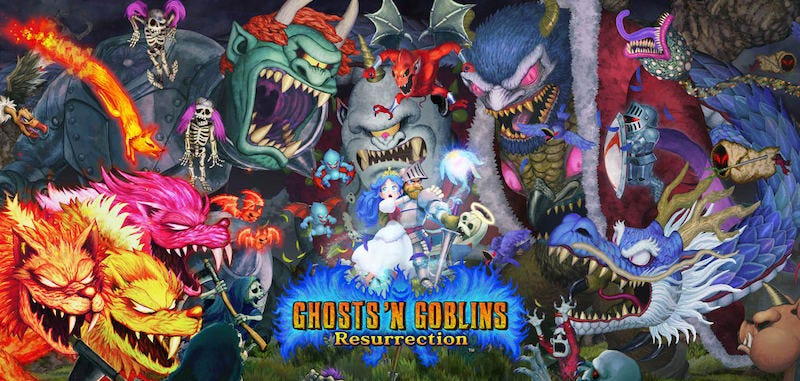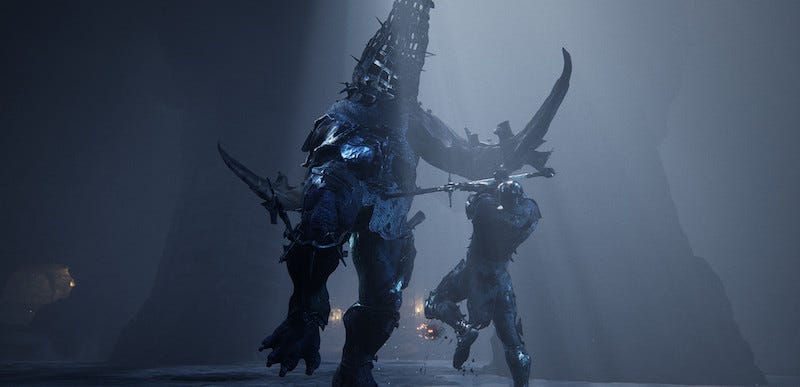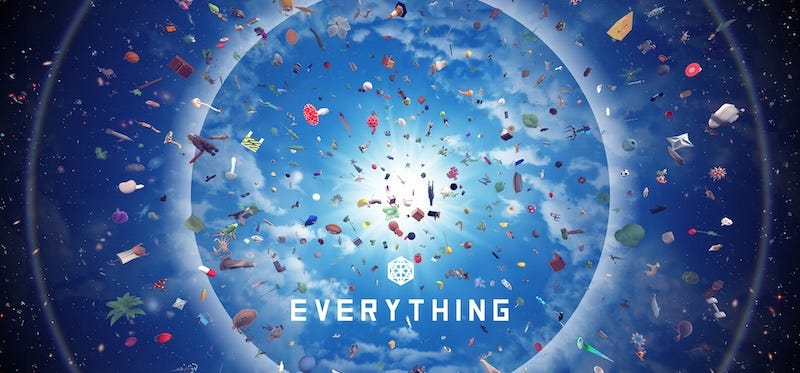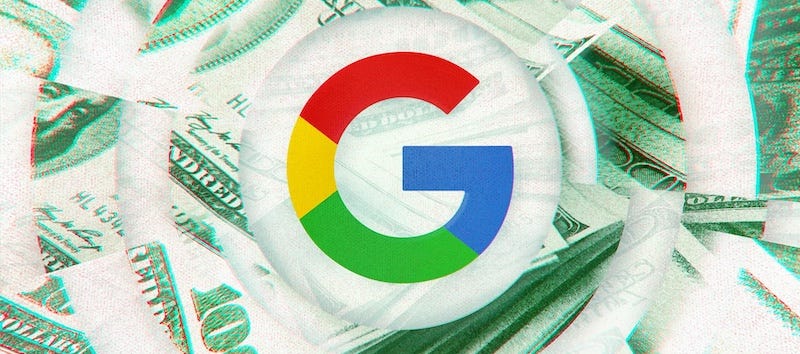How to differentiate your game for success in 2021
Publikováno: 17.3.2021
What is this? A newsletter for ants?
[The GameDiscoverCo game discovery newsletter is written by ‘how people find your game’ expert & GameDiscoverCo founder Simon Carless, and is a regular look at how people discover and buy video games in the 2020s.]
Look, it’s us again! You know, the wordy but helpful newsletter about game platforms and discovery written by that guy who likes typing a lot. (Sorry, Clubhouse, we’ll get to you at some point.)
This time, we’re starting out with a broader column. It’s about what we think it takes to get somewhere - revenue and success-wise - on various game platforms in the hot, hot video game market of 2021.
Game platforms: 2021’s top positioning tips
Look, not all of us can have a Blue Steel look that guarantees success in whatever crowded market you’re in. In Derek Zoolander’s case, it was the competitive world of male modeling, of course.
But in your case, you’re probably a small or medium-sized publisher or developer in the world of PC and console games. (Or a platform/service that serves them.) And you likely make what I call traditional ‘premium’ games - pay once, get the whole game.
Anyhow, we’re going to go platform by platform (or platform combination) and say what we think really makes a difference in 2021:
If you want to be successful on PC (Steam, Epic Games Store, etc): you want to be making a deep-looking, ideally replayable game that seems like the kind of title players would want to pay $20-$30 for. And you might want to look at top median revenue Steam tags for inspiration.
Don’t just look at comparables for highest-grossing games. A good example: Puzzle Platformer’s best-grossing traditional 2D standout is Celeste (est. $7 to $20 million net revenue), but its median revenue across all games in the Steam tag is $800. But Political Sim’s best-grosser is Imperator: Rome (est. $6 to $19 million net revenue) and its median revenue across the Steam tag is $20,000. (Yes, over 20 times as much.)
You shouldn’t be overly calculating, but looking at what’s available and what PC players value is very, very important. When you have elements like strategy, crafting, management, and - well, anything else with a high median Steam tag revenue in your game, it really helps.
(And build the game with the community - use iterative development, Early Access-style updates, GaaS, etc. All that good stuff!)
If you want to be successful on Nintendo Switch: this used to be as easy as ‘launch a competent, high-quality game’. But nowadays it’s a little trickier, just because of the amount of titles being released - see our Scourgebringer data recently.
We’ve been talking about the kind of titles that seem to sell well in our GameDiscoverCo Plus-exclusive sales analysis newsletters recently. But the theory is: there’s a certain ‘Nintendo-esque’ style of game, quite different to PC, that is rising above the pack.
As of a couple of weeks ago, checking down Switch’s current ‘most downloaded by unit’ (this UK chart is the easiest way to do so on the web), a lot of very 2D/Nintendo-y stuff was ruling the roost: the new Harvest Moon game, the new Ghosts & Goblins, Capcom Arcade Stadium (tho it’s free to try!), Curse Of The Dead Gods, Blizzard Arcade Collection, Little Nightmares II.
Some of these overlap well with games that do well on other platforms. But many don’t. There’s a particular flavor here. Games like Rogue Heroes have done decently on PC, but they were also engineered to do great on Switch in terms of their influences, style, etc. It’s not as easy as this. It never is. But a starting point to consider…
If you want to be successful on Xbox and PlayStation: for many small and medium indies, this is trickier. The reason that it’s difficult is: a) the front pages of these stores are full of gorgeous-looking AAA games, often with premium positioning or in discounted form b) on Xbox, although sales aren’t decreasing, a lot of ‘hot indie’ interest gets siphoned off into Game Pass-related hype.
But you can still do great on Xbox, PlayStation (and PC!) all at once. Just be a viable AAA game alternative that nobody really realizes is done by a smaller team. You’d be surprised what you can do with a few competent folks and Unreal Engine/high-end Unity art.
Am thinking of games like Mortal Shell here - 500,000 units sold for a small team Dark Souls-a-like with a great look and feel, a significant portion on PlayStation/Xbox. Or go into the ‘AAA publishers used to do this, but don’t any more’ space, for example action sports (I know Descenders well on this front, haha. In some cases, AAA folks are getting back into the space, now they spotted what they’re missing.)
Not a ‘AAA on a budget’ game? For most smaller indies, Switch naturally sells better than Xbox and PlayStation (because of the lack of AAA games on Switch, and a better product/market fit). Though again, there are always crossover hit exceptions.
If you want to be successful on all platforms at once: that’s extremely difficult to plan for. 99% of you can’t be everything to everyone. (Although you can be Everything - sorry, bad video game name joke.)
But if you have a good Steam launch and then gradually grow features/sales, a decent console launch, then can get on services like Game Pass & Amazon Luna for additional lump sums, it seems like you can make good money across a number of platforms - no matter what. That’s what you should plan for.
And as I said above, sometimes you’ll just get a crossover hit. For example, there’s Streets Of Rage 4, which wielded its IP and slick online co-op gameplay to break through on all platforms, not just a couple of them. Sometimes online multiplayer (and especially co-op!) can be the glue that makes you succeed on a whole bunch of platforms at once. But it’s often ‘a magic something’ that’s not easily definable.
Overall, what works for PC/Steam may not be the optimum strategy for a Switch hit, or the top way to get a PlayStation/Xbox smash. So you really have to play the angles here and decide what’s most important to you as you build your game.
The game discovery news round-up..
Let’s get to the rest of the notable news here. And since this section is headed by a gigantic G logo with pictures of money underneath it, you might know what we’re starting off with:
Big news here on platform storefronts and percentage cuts on the mobile games side: “Google is reducing its long-standing 30 percent cut, which it takes from each Play Store digital purchase for all Android developers around the world [to 15%] on the first $1 million they make on the digital storefront each year, starting on July 1st.” It’s more generous than Apple’s version of the cut, where only app makers who make less than $1 million in total get the better rate. Your move, PC/console platforms?
Have mentioned before how the game streamer space has a fascinating melange of fans, players and influencers interacting. Well, this visualization of Twitch communities for game streamers illustrates it in a great way. Creator says he “[catalogued] viewers in each stream and calculating the viewerbase overlap between each streamer. Colors denote streamers with significant overlap, ie. they are watched by the same audience.”
The ‘free/subscription content console wars’ continue, with Sony generously giving access to 10 free PS4 /PSVR games, including Subnautica & Rez, as part of their Play At Home initiative. To which Microsoft strikes back with EA Play coming to the PC part of Game Pass, as well as a big wave of new Game Pass titles - Genesis Noir, Empire Of Sin, Star Wars Squadrons, Octopath Traveler, Yakuza 6, and more. Lotta games!
You’re probably all bored of Steam game wishlist and revenue math now. But as part of a massive Twitter thread, I thought Jake Birkett did a good job of fitting realness into 280 characters: “10k wishlists [at launch] x 0.2 [wishlist to sales ratio] = 2000 week 1 units at $15 each = $30k gross x0.6 (Steam+taxes+refunds) = $18k net. x3 for year1 = $54k. Can you make a $15 game for about $50k inc dev/art/music/marketing? It’s tough.” This is why publisher/portfolio plays are thriving, of course - to get the outlier hits to pay the budget for the rest of the games.
The humble/interesting folks at Frictional Games have a blog post saying: “SOMA has sold more than 1 million copies on PC and quite a lot more if you combine it with sales on PS4 and XBOX One.” They creditword of mouth: “The game even sold quite a lot more last year than it did the year before that.” That’s your hope with high-quality one off experiences in strong niches like horror/intrigue. The devs also note: “we’ve sold more than a hundred thousand copies of Amnesia: Rebirth and we feel really optimistic about the future for the game.”
Microlinks: an interview with the Washington Post’s Elise Favis on how and why you should pitch your game content; a useful FAQ from Akupara’s David Logan on how to set up your indie game’s Discord; how Ryan Sumo (Academia: School Simulator) used Airtable to organize the team’s in-game events.
Finally this newsletter, for a little light Nintendo/IP-related relief. My buddies from the Video Game History Foundation’s Discord (pledge $10 a month to get in!) are organizing an ‘off-model Mario’ vote-off on Twitter. And we’re already down to the ‘best’ (worst?) 16 terrible Mario depictions.
Anyhow, feel free to check the Twitter account for the final results in a few days. In the end, all of the 16 remaining finalists make me happy, in a ‘haunted by an Italian plumber’ type way:
[We’re GameDiscoverCo, a new agency based around one simple issue: how do players find, buy and enjoy your premium PC or console game? You can subscribe to GameDiscoverCo Plus to get access to exclusive newsletters, interactive daily rankings of every unreleased Steam game, and lots more besides.]






